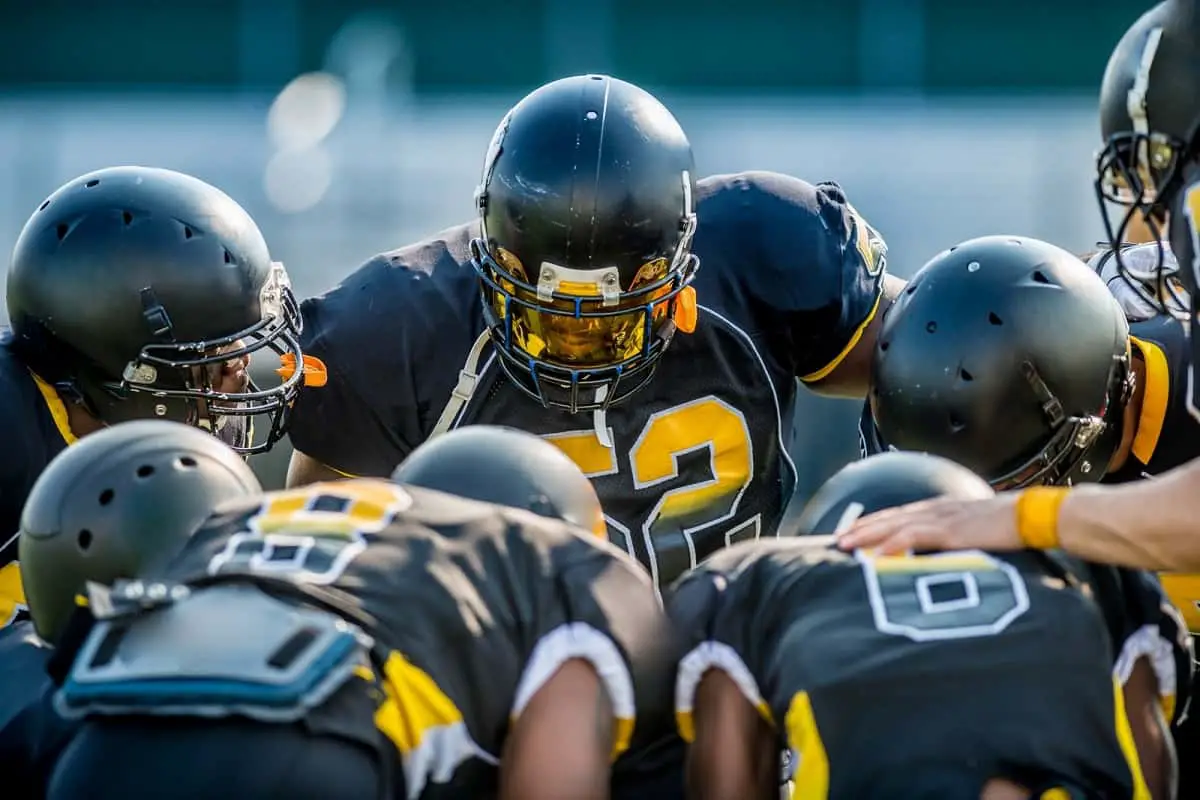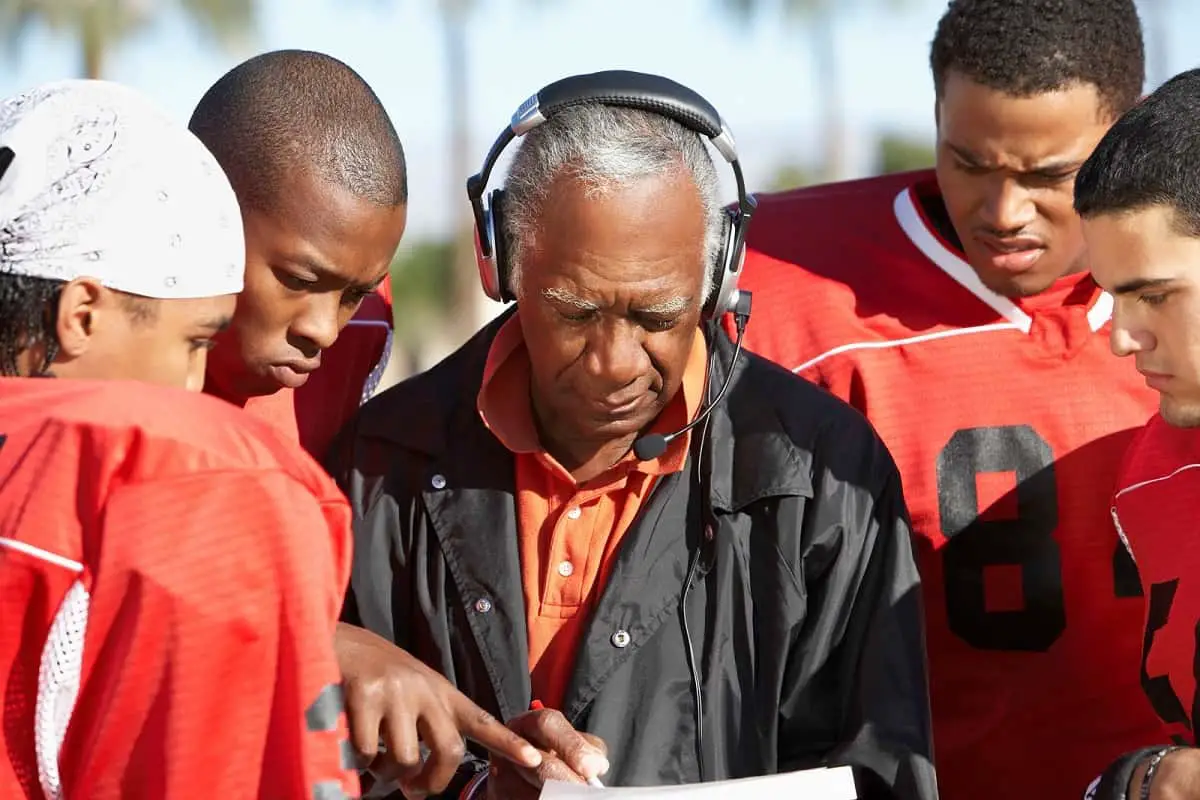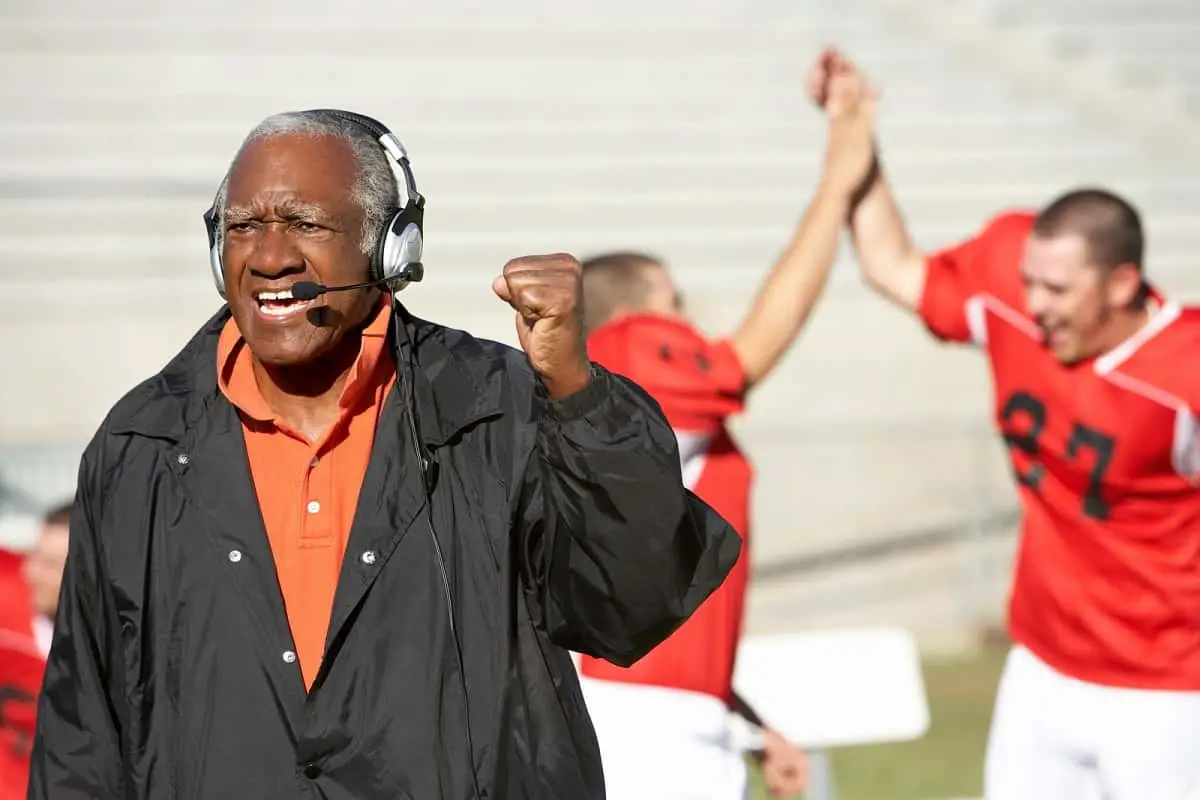Do Quarterbacks Have Speakers In Their Helmets?
Gone are the days when football players had to rely on sideline coaching or a huddle to know the next play strategy.
The coach is always talking into a headset, so who is he talking to? Do quarterbacks have speakers in their helmets?
Technology has developed to the point that quarterbacks can communicate directly with the coach without having to interrupt gameplay. This is thanks to the advances made in NFL helmet equipment.
Let’s take a closer look at the tech inside of modern football helmets and further explore how coaches and teams use this modern technology to play more efficiently.
KEY TAKEAWAYS
* Quarterbacks can receive instructions from the coach via speakers in their helmet.
* The QB’s helmet has no microphone.
* Only two players on the field have speakers in their helmets.
* A green sticker on the back of the QB’s helmet allows the referee to know who has the speaker helmet.

Disclosure: As an Avantlink and Amazon Associate, we earn from qualifying purchases. Disclosure Statement.
Page Content
Do NFL Players Have Microphones in Their Helmets?
There’s some confusion among football fans that all players have microphones in their helmets. While it is true that some players have speakers in their helmets, the speakers work on a one-way system, meaning that players cannot communicate with their coach or with each other through a microphone.
The built-in speaker is only small enough to allow the coaches to share their input and it is positioned in the back of the helmet, away from the player’s mouth.
Additionally, only professional athletes are allowed to have speakers in their helmets. For college football players, it is even illegal to use speakers. Instead, you’ll see coaches using hand signals and picture boards from the sidelines to relay information.

Do Quarterbacks Have Speakers In Their Helmets?
Going beyond the confusion that players’ helmets have built-in microphones, it is also commonly assumed that all players have a speaker in their helmets. This isn’t true. Since 2008, only 1 player on each team can have a speaker in their helmet – typically the quarterback. This way, the coach can relay information to the quarterback and they can share it with the team in a huddle.
As you watch a game, keep your eyes peeled for a tell-tale green sticker on the back of the quarterback’s helmet. This allows the referees to track who is in communication with the coach and guarantees that only one player on each team can relay information.
It’s difficult to imagine that with the focus on protection built-in to helmets nowadays, they could include speakers in the helmet of a rough and tumble contact sport like football.
Which Coach Can Talk Through the Speaker?
Not all coaches can communicate with the player on the other end of the speaker. Only the coach on the sidelines can share information, meaning that coaches in the booth are banned from communicating through the speaker. This prevents coaches in the box from sharing their birds-eye perspective of the game.
Additionally, the speakers must cut out during the last 15 seconds on the clock. Having a coach mentally play through the game for the quarterback at the last minute would give the offensive team too much advantage and ruin the equality among teams.
How Do Speakers in NFL Football Helmets Help the Game?
Communication between a coach and a quarterback is essential to gameplay. NFL stadiums can easily pack tens of thousands of screaming fans that would make it nearly impossible for coaches to relay plays and vital information from across the field. Therefore, a speaker makes communication far more efficient.

On the off chance that the speaker is damaged or there is some interference causing static, this can lead to a breakdown in communication and lead to delays and penalties. If one team’s intercom completely shuts down, NFL regulations state that the other team must also forfeit their speaker, for the sake of fairness.
Some teams also use the speaker system to get plays to their quarterbacks ahead of time. This is especially useful for younger quarterbacks who struggle to break down coverages. The coach can break it down step by step while the quarterback is still out on the field, thus saving time and effort.
The same goes for defensive players. They also need to quickly and efficiently break down information from their coaches to prepare for the next play. The only difference is that defensive coaches can rely on simple signals rather than in-depth analyses of offensive strategy.
What’s most fascinating, though, is that every team, quarterback, and coach has a unique system of signals and verbiage. The next time you are watching an NFL game, pay close attention to the coaches and you might just notice some of the unique signals and gestures they use to communicate with players on the field.
This content was originally published on headsdontbounce.com. If it appears on another website, it is a violation of the copyright owned by headsdontbounce.com.
If you’re not familiar with the unique hand signals of football coaches, then take a look at these two short videos (5 seconds and 26 seconds respectively). If you’re already familiar with these signals, you’ll probably enjoy a good laugh anyway.
Summing Up
Some, but not all, NFL football helmets have built-in speakers. The speaker allows coaches to communicate information to one player on each team, though the player cannot speak back through a microphone. Typically, only quarterbacks have a speaker in their helmet and you won’t find speakers in use outside of the NFL. College teams still rely on hand gestures and picture cards.
I hope we have answered the question of ‘do quarterbacks have speakers in their helmets’ to your satisfaction. If you enjoyed this article, take a look at the related reads below for some more interesting reads!
Related Reads:
